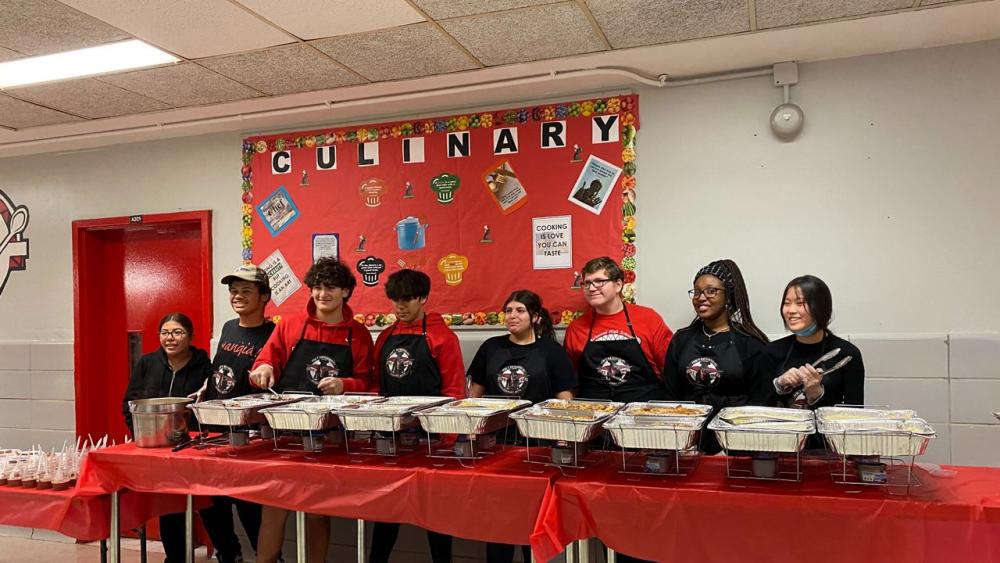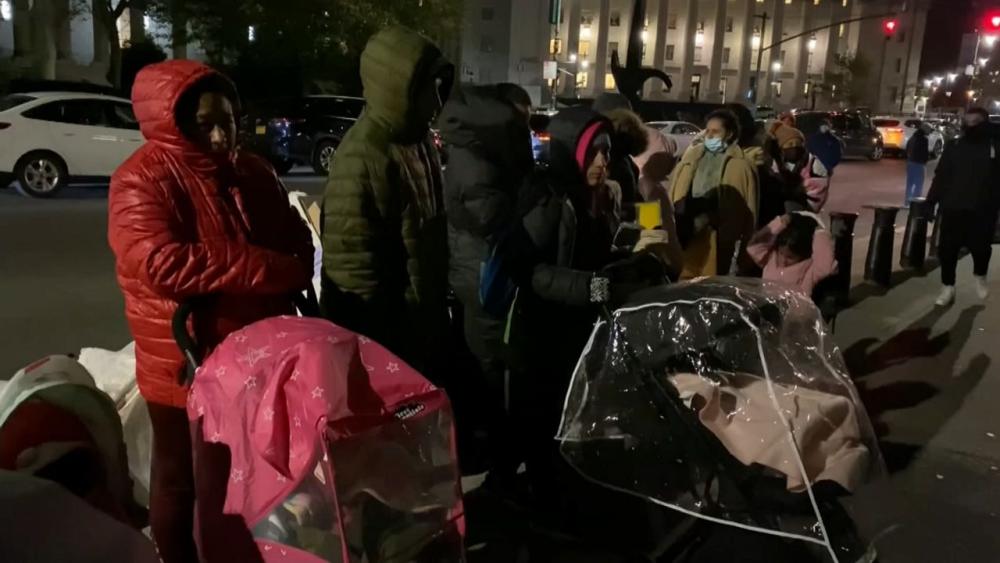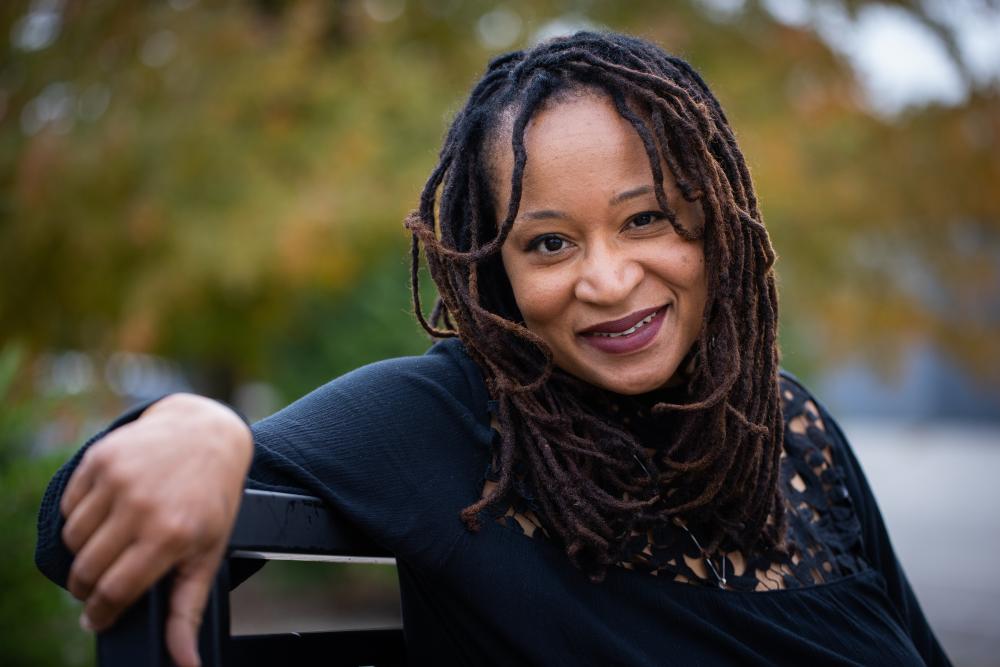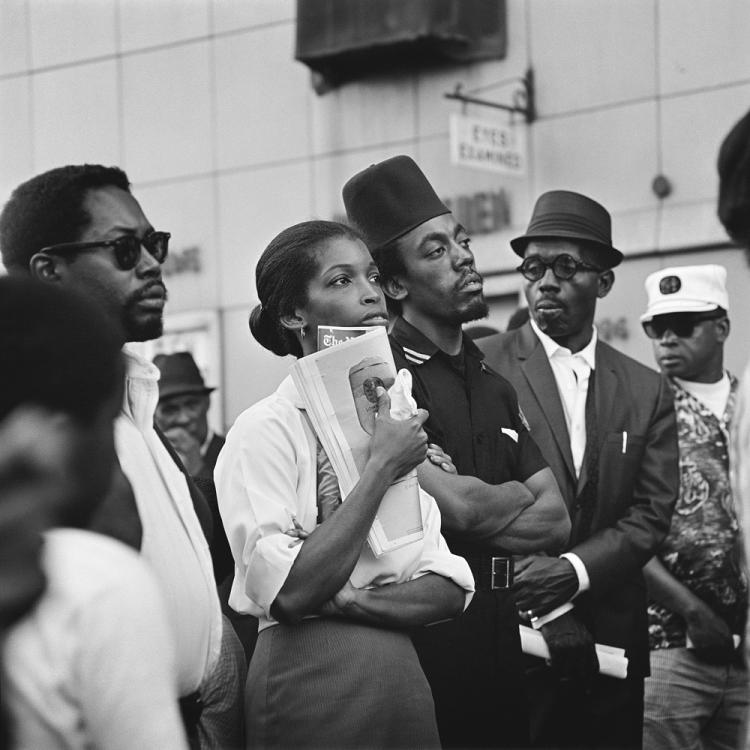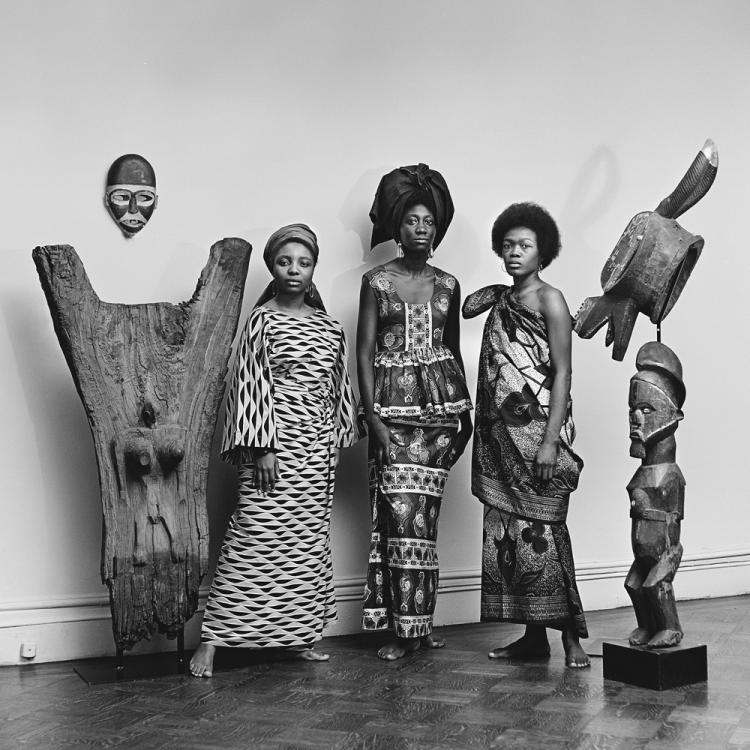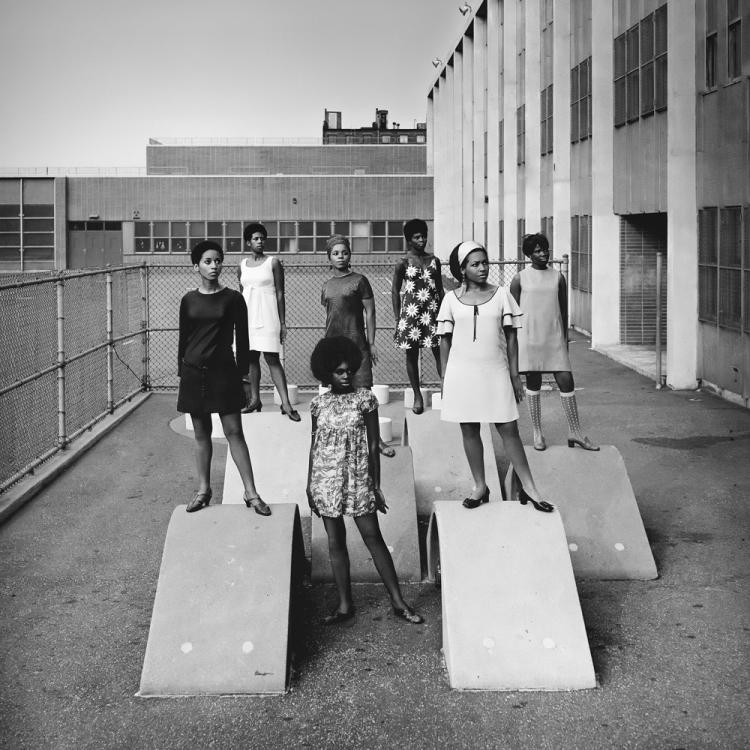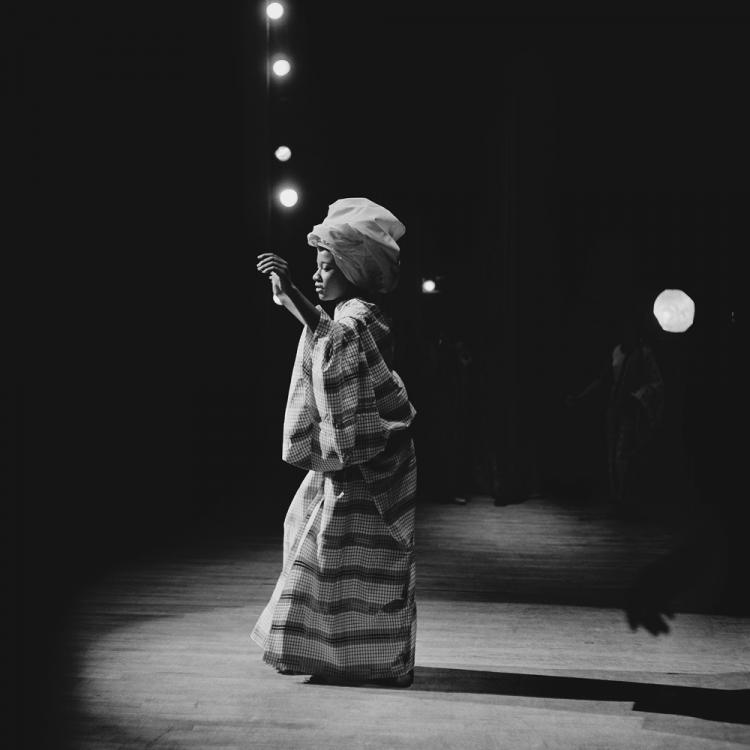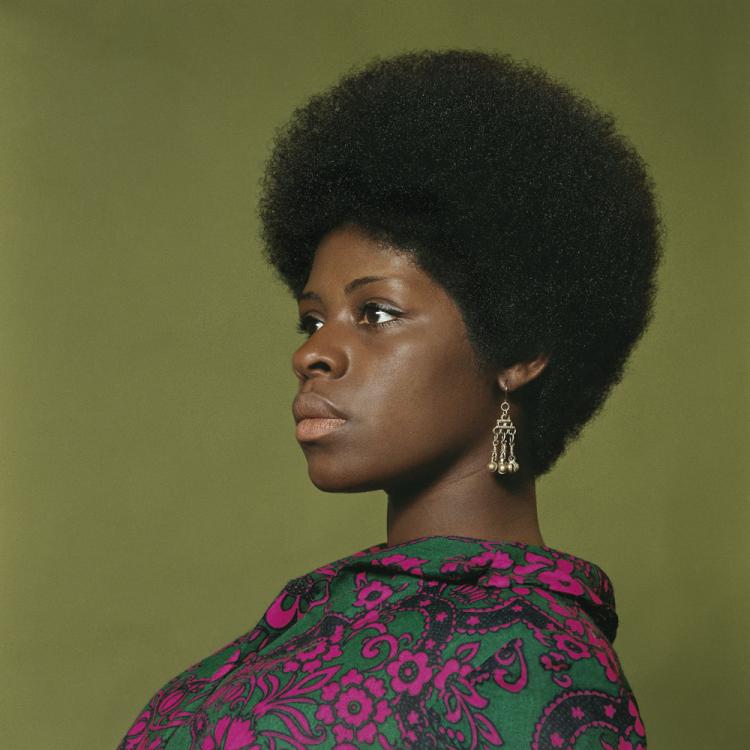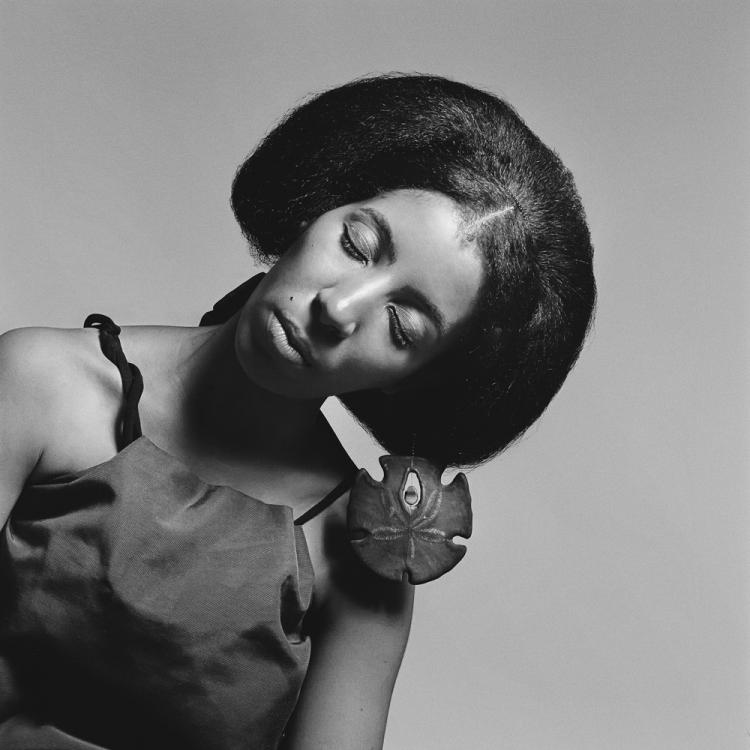-
Posts
2,404 -
Joined
-
Last visited
-
Days Won
91
Content Type
Profiles
Forums
Blogs
Events
Everything posted by richardmurray
-
Title: Scourged back by McPherson & Oliver, 1863, retouched
Description: Scars of a whipped Mississippi slave, photo taken April 2, 1863, Baton Rouge, Louisiana, USA. Original caption: "Overseer Artayou Carrier whipped me. I was two months in bed sore from the whipping. My master come after I was whipped; he discharged the overseer. The very words of poor Peter, taken as he sat for his picture."
NOTE: The New York Times writer Joan Paulson Gage, noted, "The images of Wilson Chinn in chains, like the one of Gordon and his scarred back, are as disturbing today as they were in 1863. They serve as two of the earliest and most dramatic examples of how the newborn medium of photography could change the course of history." [ read the second article below ]
Will Smith Responds to People Who Reject His Comeback So Soon After Oscars Slap: ‘I Completely Understand’By Zack Sharf
Will Smith’s press tour for “Emancipation” has begun, with the actor directly addressing moviegoers who are not yet ready to embrace his work following the Oscars slap earlier this year. “Emancipation,” a slavery drama directed by Antoine Fuqua, is Smith’s first major film release since the 2022 Oscars, where he took the stage and slapped presenter Chris Rock across the face over a joke made at the expense of Smith’s wife, Jada Pinkett Smith.
“I completely understand — if someone is not ready, I would absolutely respect that and allow them their space to not be ready,” Smith told journalist Kevin McCarthy when asked what he would say to moviegoers who aren’t ready for his comeback. “My deepest concern is my team – Antoine has done what I think is the greatest work of his entire career. The people on this team have done some of the best work of their entire careers, and my deepest hope is that my actions don’t penalize my team. At this point, that’s what I’m working for.”
Smith added, “I’m hoping that the material — the power of the film, the timeliness of the story — I’m hoping that the good that can be done would open people’s hearts at a minimum to see and recognize and support the incredible artists in and around this film.”
“Emancipation” is based on a true story and stars Smith as a runaway slave named Peter, known better to the world as “Whipped Peter” after photographs of keloid scarring on his back were distributed to show the brutality of slavery. The film follows Peter as he navigates the swamps of Louisiana to escape the plantation owners that nearly killed him.
In an interview earlier this month with Vanity Fair, director Antoine Fuqua defended releasing “Emancipation” in the same year as Smith’s Oscars slap.
“The film to me is bigger than that moment,” Fuqua said. “Four hundred years of slavery is bigger than one moment. My hope is that people will see it that way and watch the movie and be swept away with the great performance by Will and all the real hard work that the whole crew did.”
According to Fuqua, committing to release the movie in 2022 was “a full conversation with Apple” but “there was never a conversation with me and Apple or my producers about the movie not coming out.”
“Of course I wanted people to see the film,” Fuqua said. “My conversation was always, ‘Isn’t 400 years of slavery, of brutality, more important than one bad moment?’ We were in Hollywood, and there’s been some really ugly things that have taken place, and we’ve seen a lot of people get awards that have done some really nasty things. So I think Apple considered all those things, and we discussed a lot of those things. Then a decision was made by the people in charge of distribution and the money at Apple — and I’m grateful, I’m really grateful.”
“Emancipation” premieres in theaters on Dec. 2 and will stream on Apple TV+ starting Dec. 9.
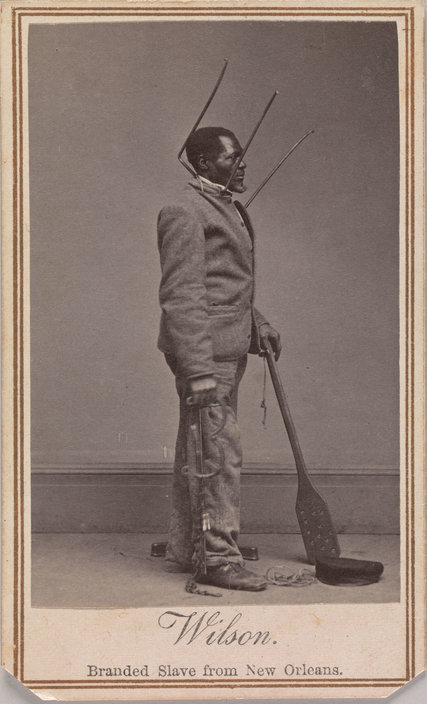
"Wilson. Branded Slave from New Orleans," 1863, taken by Charles Praxson.Credit Private Collection, Courtesy William L. SchaefferIcons of Cruelty
BY JOAN PAULSON GAGE AUGUST 5, 2013 12:45 PMTwo iconic photographs of former slaves documenting the torture inflicted on them by their owners were widely circulated during the Civil War as anti-slavery propaganda, and both appear in the current exhibit “Photography and the American Civil War” at the Metropolitan Museum of Art. Although the images were extensively reproduced and helped to turn public opinion against slavery, the stories of the two men in these shocking photographs are little known today.
Perhaps the most famous anti-slavery image ever made is “The Scourged Back,” in which an escaped slave named Gordon poses to reveal the web of raised scars covering his body. An engraving of this photograph, attributed to McPherson and Oliver of New Orleans, was published on July 4, 1863, in Harper’s Weekly, along with the explanation that Gordon had escaped his master in Mississippi and threw the pursuing bloodhounds off his scent by rubbing himself with onions. After an arduous journey, he managed to reach the Union Army stationed at Baton Rouge, La., 80 miles away.
Gordon decided to enlist in the Union Army — something that President Lincoln had legalized only months earlier — and during the required medical examination, the officers saw his back “furrowed and scarred with the traces of a whipping administered on Christmas Day last.” They called for a photographer to document it. On April 16, 1863, S. K. Towle, surgeon, 30th Regiment, Massachusetts Volunteers, sent a C.D.V. (carte de visite) photograph of Gordon’s back with a letter to W. J. Dale, surgeon general of the state of Massachusetts. He wrote: “Few sensation writers ever depicted worse punishment than this man must have received, though nothing in his appearance indicates any unusual viciousness — but on the contrary he seems INTELLIGENT AND WELL BEHAVED.”
The Harper’s article also included an engraving of “Gordon in his uniform as a U.S. Soldier,” holding his musket. Little is known of Gordon’s military career. One published report said that he served as a sergeant in a black regiment that fought bravely at the siege of Port Hudson on May 27, 1863 — the first time that African-American soldiers played a leading role in an assault.
Meanwhile, the photograph of Gordon’s scars took on a life of its own as a weapon of the abolitionists. It was reproduced and sold in the carte-de-visite form by C. Seaver of Boston; by McAllister of Philadelphia, who first titled it “The Scourged Back”; and by other American photographers, including Mathew Brady. Another version was issued by a British publisher, titled “The ‘Peculiar Institution’ Illustrated”; an ironic reference to the euphemism for slavery used by Southerners.
On the back of the British version were printed remarks from newspapers, including this from The New York Independent: “This Card Photograph should be multiplied by the 100,000, and scattered over the States. It tells the story in a way that even Mrs. [Harriet Beecher] Stowe [author of ‘Uncle Tom’s Cabin’] cannot approach, because it tells the story to the eye.”
While the photograph of Gordon’s back may first have been made as a clinical document and then turned into propaganda, the C.D.V. photograph of Wilson Chinn with chains and torture instruments was from the start meant to excite anti-slavery emotion.
In December of 1863, eight former slaves were brought north from New Orleans, sponsored by the American Missionary Association and the National Freedman’s Relief Association. They were taken to photographers’ studios in New York and Philadelphia and posed in dramatic scenes for photographs, which were sold for 25 cents each to raise money for the education of former slaves in Louisiana. The other purpose of these photographs was to increase abolitionist sentiment in the North by using the fledgling science of photography to dramatize the evils of slavery.
Five members of the group were children aged from 6 to 11 — three girls and two boys — and four of them were so fair-skinned that they appeared entirely Caucasian, although all five had been born as slaves. The only adult in the series of photos, which were made by Myron H. Kimball and Charles Paxson of New York and J. E. McClees of Philadelphia, was Wilson Chinn, identified on most of the photographs as “a branded slave.”
On Jan. 30, 1864, Harper’s Weekly published a large engraving of the group portrait. In an article titled “Emancipated Slaves White and Colored,” Harper’s introduced each individual. Here’s the paragraph about Chinn:
“Wilson Chinn is about 60 years old. He was ‘raised’ by Isaac Howard of Woodford Country, Kentucky. When 21 years old he was taken down the river and sold to Volsey B. Marmillion, a sugar planter about 45 miles above New Orleans. This man was accustomed to brand his negroes, and Wilson has on his forehead the letters ‘V.B.M.’ Of the 210 slaves on this plantation 105 left at one time and came into the Union camp. Thirty of them had been branded like cattle with a hot iron, four of them on the forehead, and the others on the breast or arm.”
(The letters branded on Wilson’s forehead were not clear in the photograph, and the photographer, Kimball, had to retouch the negative to make them visible.)
The Northern photographers posed the children in fine clothes and sentimental poses with titles like “Oh! How I Love the Old Flag” and “Our Protection.” Wilson Chinn was posed in one scene, “Learning Is Wealth,” apparently reading a book to three of the fair-skinned children. But his other photos were meant to illustrate the savagery of the treatment of slaves. He was posed by Paxson in profile in the C.D.V. from the Met’s exhibit wearing a spiked collar and leg irons and holding a nail-studded paddle. (There exist at least two other versions — a frontal view by Kimball with the paddle on the floor and a third, also by Kimball, in which the instruments of torture are all on the floor. Wilson stands with his left foot atop the paddle — no doubt symbolizing that he is now free.)
The grisly images of Wilson wearing the spiked collar are the rarest and most valuable. In 2002 one of the Kimball C.D.V.’s sold on eBay for $1,846.
Jeff L. Rosenheim, the Met’s curator of photographs, wrote in the catalog for “Photography and the American Civil War” that he found the Wilson Chinn photo especially puzzling: “Paxson No. 8, Wilson Branded Slave from New Orleans … is a bewildering instance of Civil War photographic marketing that asks as many questions about the individuals who commissioned the portraits as it does about those who would purchase or collect these images.”
Undoubtedly Wilson Chinn, and even the children who traveled with him from New Orleans, knew that their role in coming North was to dramatize the evils of the “peculiar institution” from which they had recently escaped.
The images of Wilson Chinn in chains, like the one of Gordon and his scarred back, are as disturbing today as they were in 1863. They serve as two of the earliest and most dramatic examples of how the newborn medium of photography could change the course of history.
ARTICLE
https://archive.nytimes.com/opinionator.blogs.nytimes.com/2013/08/05/icons-of-cruelty/-

Troy < https://aalbc.com/tc/profile/9056-troy/ > stated
QuoteThe summary of a review of Emancipation from The Atlantic:
“Some viewers may be inclined to avoid Emancipation because of Smith’s and McFarland’s actions. But the mediocre film offers plenty of its own reasons for people to not watch.”
https://aalbc.com/tc/topic/9893-will-smiths-emancipation/?do=findComment&comment=57299
I reply to the article in the atlantic < https://www.theatlantic.com/culture/archive/2022/12/emancipation-movie-review-will-smith/672405/ > he linked using the folloiwing. Bold is from the article, italic is my reply
Given the minimal information available about the real man’s life story, the filmmakers have invented much of it.
I have never comprehended why that is an issue. The editor should had deleted that sentence because it is unfair to the film. Any film concerning the history of enslaved black people is by default, Historical fiction. "Glory" or "twelve years a slave" or other solomon northrup films plus the biographical fiction of his life or "abraham lincoln vampire slayer" or any film concerning the time when Blacks were enslaved to whites by law in the usa or in the british colonies is a fiction. Has invention. Why ? The visual bluntness of that time is a key part of its nonfiction. Any film that doesn't portray the visual bluntness of slavery is missing the point of why during its time, black people were paraded in the most cruel ways. It wasn't for nothing. The goal was to make sure, regardless of wheher you could read or not, you can see, what slavery was and its rules.
Smith looks just like the larger-than-life persona he’s played many times throughout his career. One character explains that Peter can “survive things most men can’t,” turning Peter’s story into, essentially, a superhero saga.
And what is wrong with that? Superhero sagas are the biggest money makers today and audiences tend to like them. Now she could had said, that this film made the same mistake Abraham Lincoln Vampire slayer did. In that, it is a historical fiction film involving the history of the USA and its historical abuses are not handled in a way that the modern audience can handle. But she doesn't make this point. She complains that Fuqua directs this historical fiction super hero film as its label suggest. That isn't a demerit. If I say something is a film noir musical involving the Valentine's Day Massacre, and someone says, a white female character burst out into a gospel solo song in an irish bar snapping her fingers three times really was disjoint from the mob scene just before with the men humming to each other, I will reply it is a musical. Film genre's have ways about them, that are specific and fans like those taste. If you are watching a space opera be ready for an ancient warrior to have a speech, even if it is not at a plausible time.
But Emancipation isn’t examining history; it’s indulging in fantasy. By turning Peter into a warrior, the film undermines the very figure it’s trying to honor. His image represented the horrors of slavery, and its dissemination helped further the abolitionist movement—yet his own, human story was not definitively told. Emancipation could have done that.
She commits four errors for me.
1st) Emancipation is a fictional film. She returns to her first main point, that this work of fiction is a work of fiction. The problem is, she desires an examination, which means what? she wants a rehash of old positions or some new statement to be made. But, the problem with historical truth is it holds few secrets after a while. What do I mean? Black people were enslaved to whites in the usa or the british colonies that preceded it. Said enslavement involved all the negativities you can imagine and the ones you can't. Case closed. What people like the reviewer want is a speech made. She doesn't want history examined. We all know enslavement in the USA. What she wants is preaching or proselytization. She wants Emancipation to say, relate to slavery this way. And while the film does do that by suggesting it be deemed a epic hero tale. She wants it to say people should relate to it as a story of survivors against abusers and that the abusers were "cancelled" through the war some call the war between the states. The problem is, as I said in the comment stream this first appeared in, Black DOSers in the Black community in the USA are free to relate to the usa as they want. That is what the examination should say. Can Black DOSers say, Black folk overcame oppression to be American? yes. Can Black DOSers say, Black folk need to kill America? yes. Enslavement doesn't require anymore examination. In films/music/literature it has been covered quite extensively. The concluding thoughts of the various artists to said work vary as their humanity. But, Emancipation the film doesn't need to provide any examination, First , as I said, the time period has been examined. Second, since the life of the man in the photo isn't known so examining it as she suggest is paramount to a public convenient lie.
2nd) She has taken a huge liberty here, and it is unwarranted. Why isn't Peter a warrior? First, what determines a warrior? the mythology in story telling from the song of sundiata or journey to the west to Thor Ragnarok or Into the Spiderverse is the warrior , whether superhero or adventurer or god or king, fights a battle against an enemy. The enemy can not be it's life. Sundiata/Son Goku/Thor of Marvel/Miles Morales or Peter Parker aren't fighting their lives. Their lives are generally happy. They are fighting the bad guys or gals. Her stated position suggest Peter is a survivor, not a warrior. But she is wrong. He is both. The enemy you fight is your life when one is enslaved. Cause your life isn't controlled by you, and it is a constant fight to develop/find/maintain oneself when enslaved. Peter is a warrior who is simultaneously a survivor, like all in human history, whether they be human or not, who live enslaved, at the whim, to another.
3rd) is related to the second. What is the potency of movements? Like what defines a warrior, she offers an idea but it is challengeable. The war between the states and the abolitionist movement are not connected as tightly as people think. I give the civil rights movement and the 1960s laws or court ruling [civll rights act/immigration act/voting rights act or brown vs board of education] in a similar light. I will use White european history to explain. Many call it the "fall of the roman empire" the movement of the barbarians against Roma was the tide. But the fall didn't occur and the source of the problem wasn't the barbarians, it was Roman culture. The word provence comes from the first place the Roman state/city state had taken over by military means. What is the point ? Rome's problem wasn't barbarians. IT was a simple truth. Their system of growth or existence by military annexation means the Roman empire in its entire history constantly tried to annex the outsider. Julius Caesar didn't change Roman culture, he simply changed the bureaucracy. Before and After Julius Caesar Rome was annexing outsiders. What are the problems with a culture of annexation? One, if your ever in a weak moment, the people you are trying to annex will be well positioned to attack into your lands because of your offensive posture. Two, as with all human beings, communities oppressed learn from communities oppressing. The barbarian leaders were in many ways, culturally attuned to Rome. That intimacy yields to great advantage. And, Rome in a very weak moment lost half of its annexed lands. But, history shows, that Justinean or another annexed it all back. So , even when the capitol of Rome went to Nova Roma, modern day Istanbul, sometimes called Constantinople, Roman culture was the same its entire history. When the Roman empire did Fall it was a city state, in said Nova Roma, being taken over by the Ottomans who, had annexed all of its former territories in the western mediterranean. So, the roman empire in its history, maintained military annexation or conquest and in all of its weakest moments <the fall at roma or the fall at nova roma >were raided by those it was at war with. That was the key. It wasn't the unchristian or journeyman culture of the vikings or the islam or fanatacism of the Ottomans, it was the nature of the Roman empire and the inevitability of its own nature. To the USA. The small percentage of enslaved black folk finding freedom or speeches of white or black abolitionists on pulpits didn't make the War between the States or the financial scenario of enslavement be the issue in or around that war. Nor did the photos of pregnant black women being hanged or marches by black baptist preachers make the civil rights act and analagous laws or court rulings. The war between the states problem is the infancy of the USA. The USA was founded with stolen land from a people genocided near to extinction while worked on by enslaved people treated to no decency at its financial core. While, the legal core was about a universal individual right, even against the government itself. None of the founding fathers had placed the financial truth of the USA in the legal framework of the constitution. This is why the articles came first. The whole point of the articles was to avoid inter-state wars. The problem is, the articles couldn't avoid, intra-state wars <wars inside states>. If slavery is legal at the federal level in the constitution the war between the states doesn't happen, plain or simple. Why? if slavery is legal then the states can't bicker on the federal level over slavery being allowed in any state. And after the war between the states, the south revitalized USA industry, when Black people were now put in the only enslaved position legal anymore, and that was in prisons. But, at the end of the war between the states, the lack of population truth in the legal framework caused the 1960s scenario. Yes, slavery is over, but now, you have half of the southern states with populaces that are half black, and have no wealth or ownership to themselves or in those states. And, the whites of the north are as equally if not more negatively biased to the idea of black wealth. so, reconstruction was bound to fail. Whites of the north as easily predicted would give their southern peers all their ownership back, to stop blacks or poor whites from creeping into the halls of power, and thus the communal structure of the south between the phenotypes was reinstituted by the wealthy whites with facsimile changes. The In the white community in the usa the abolitionist movement or back to africa movement was always fringe or impotent cause enslavement was and is the engine of the usa labor machine. Slavery is legal. What was the immigration act for? If tHe civil rights act said those not white male european descent have rights then the usa needs a horde of enslaved/immigrant people to come in and work for beneath market rate, by any means necessary. Did black DOSers march for immigrants, including black immigrants, to come into the usa and get jobs? of course not. Did Black DOSers, many who were hard core christians, march for LGBTQ+ , including Black l~+ , rights? of course not. Big events in the history of any country tend to be inevitables. The World War continued, World War II, because the USA/England/France told Germany , which was the leading industrial country in Europe at that time, to accept eternal extortion to the winners of World War I, the war to end all wars, for losing. They inevitably chose to fight again. The form was irrelevant. If it wasn't the national socialist it would had been another. Movements don't have the power history likes to suggest they do. In CHina, the Falun Gong or Buddhist especially with Tibet or Muslims especially with Ugyars problem is the creation of China under Citizen Mao. Mao hid in the defensive with the tibetans and muslims from Chang Kai shek's nationalist controlled China. But when Mao made the Chinese legal system he said no religion. And that has led to all these problems with staunch religious groups. Now the history of Christianity or Islam proves, given enough time, communities can be mangled into another form. But, the inquisition era had to kill and harm many for Europe to truly become Christian. The USA's labor problem is simple. MAchines, the perfect slaves, can do many things, and humans are not needed to be the laborers for the human wealthy. But, since 99% of humans are not the human wealthy, what will they do when they can't get a job? And a job is needed cause, rent/food/healthcare now must be paid for. Inevitable problems is what led and will lead to major moments in all governments in humanity. The movements are irrelevant to the source of the problem, they merely create or call for the facimile changes that do not improve conditions or stop the future inevitable incidents. Functional/Truthful government, any governmental form, stops problems. But said government rarely gets movements cause the truth or function tends to force harder choices or sterner realities, that many want to evade. You can wrap this up saying, the photo or the man or the abolitionist movement who advertised it were all for show.
4th) she publicly lied, though I blame the editor for lack of seeing it. She said in her own article that this film is fabricated on points of the life of the man in the photo. Ans states later that the story of the man in the photo is not definitively told. But, then suggest the film could not had fabricated a story on his life and made a definitive tale, when the truth is it couldn't. The story isn't known, that is fact. Any thing said about the life of the man in the photo is a lie at worst, a guess at best. and between a lie or guess is no definitiveness when it comes to a life's moments.
Despite a committed cast and often stunning cinematography, the film’s script is too blunt and the direction too ham-fisted to make Emancipation anything more than another rote—albeit expensive—entry in the slavery-movie genre.
Like all movie genres that are heavily saturated, from film noir to musicals to superhero, the slavery movie genre is heavily saturated. If you are looking for a film about slavery to be ephiphanic I think you are foolish at this time. The history is known and all the positions have already been presented in various media. You simply take it or leave it. But, judging it as demerited from your displeasure is unfair.
IN CONCLUSION
Like Hancock or Hitch, Will Smith is in a genre film showcasing himself and an idea with a character a little out of sorts from the norm in similar films. In Hancock he is a superhero absent frills or grand purpose, not unknown but not common. In Hitch he is in a romance movie playing someone who doesn't believe in romance while working as a romantic consultant, not unseen but uncommon . In Emancipation, he is in a historical drama about slavery playing a person in history with little to nothing known about them outside they lived, thus a canvas to imagine however one wants, not unique but rare. In Bright he is in a lord of the rings world, but with the framework of Alien Nation, not totally unknown but rare. Will Smith tends to be in films like this. They are slightly uncommon places in a genre. Sequentially, they tend to go hit or miss. The reviewer in my view, wants the film to be an artistic guidepost to teaching how humanity can become more positive functionally and from her words it plays out as a super hero film with a historic figure from slave times in the USA that can never be known in details. Clearly not everyone's cup of tea, BUT is that a problem? The Self righteous , sometimes called woke today, will suggest a problem, but will the world audience? The Woman King proves the global audience likes action involving Historical Fiction films involving the Black experience in relationship to Slavery. Not everyone's cup of tea, but money making, it looks like it. And will it have supporters on artistic merit? yes. The better position for a judge isn't there is much to not dislike, but it is an uncommon taste that you will love or hate or be unmoved from.
The first comment to the following post is of a similar man to Will SMith and provide a similar assessment .
https://aalbc.com/tc/profile/6477-richardmurray/?status=2141&type=status
-
-
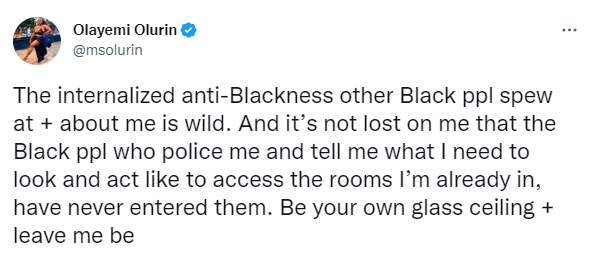
My Reply
Bill T Jones once said, on Bill Maher's show, he was chided in the 1960s for a performance by other black people, and he said he thought the movement was about individual liberty.
But, what many Black people or other population minorities in the USA don't see/comprehend/know/admit is that the majority in all minority groups are not fighting to get individual liberties for all, but they are fighting to get majority liberties in their minority.
When the war between the states ended, the Black community was courted by white christian protestant groups for various reasons. But it made a hard space for Black agnostics or atheist or traditionalist <spiritual or religious beliefs brewed in the Black community during enslavement before the war between the states ended that are not christian ,ala Daughters of the Dust grandmother> . Frederick Douglass , a mulatto< a person with a phenotypically white parent plus black parent>, I feel was opposed to publicly supporting other options for Black DOS, <descendend of enslaved> who represented over ninety percent of the black populace in the usa at that time, largely in part because he knew all other options: a state in the union/leaving to canada or africa or haiti went against individual liberty growing in the black community. Which he himself needed as he had a white mistress and many Black people at that time, a recently completely enslaved people to whites , frowned on that.
Many Black people felt and some feel the Black community was used in the 1960s. The civil rights act was never meant to be an individual liberties act, which is what it is. It was meant to be a leveller for Black DOSers originally. But, the party of Andrew Jackson saw an opportunity to gain many votes by expanding the civil rights act to women/jews/asians or all non white european male christians, not merely Black DOSers, who sadly did die more than many others minorities for that civil rights act to be.
So, Olayemi's point is correct save one thing. It isn't internalized anti-Blackness as much as anti-minority. In USA history, Black used to mean , DOSers, over ninety percent. But, USA immigration policy with the immigration act of 1965 had a tremendous effect on the majority in all communities in the USA. The white communities Anglo Saxon Protestant majority already dealt with catholics or italy/ireland plus eastern european jews before joining the white community. But now, white latinos/whites of africa are coming in droves into the white community of the USA in such numbers they don't just merge into the WASP, they are their own. MArcus Garvey was from the english imperial island of Jamaica but now, the Black DOS community has to deal with Nigerians/Jamaicans/Haitians/Trinidadians/Ghanians/South Africans/Siddi of India plus other Black Asians of South East Asia in such numbers they don't merely absorb in the DOS community , they are on their own. The Asian community was once majority Han Chinese, white asians, by far, but now you have Bangladeshi/Indonesians/filipinos/iranians/pakistani in large numbers that being asian american can not be synonymous with the chinese anymore and the chinese american tradition of governmental non involvement is no longer the standard. LAtin American used to be Mexican , mostly mestizo, in the west coast and Puerto Rican, mostly blanco, in the east coast but now it is colombian/venezuelan/ecuadorian/chilean/ bolivian and not all blanco but also mulatto also negra also indio , meaning native american, so the complexity has risen and thus latino voting patterns seem all over the place.
All majorities in pen-population the USA, the native american in the usa is unique, before the 1960s have been reduced in potency by the individual liberties set in by the 1960s civil rights act and the immigration policy of the 1960s immigration act. So much so that the entire usa population as well as its parts: blacks/whites/women/latinos/christians/muslims plus all others are dealing with a plurality majority future that the former majorities didn't want, have not embraced for the most part, and thus the frictions in social media.
Bill T Jones a black man, legendary dancer, who is a member of one in the LGBTQ+ was fighting for Black empowerment as a subset of human empowerment. I paraphrase Sidney Poitier's character in guess whose coming to dinner: "you see yourself as a black human, I see myself as a human"
This is why MLK jr was so beloved by so many outside the Black community or so many minorities in the Black community. He was a Black christian preacher whose position was individual liberty. So he can get Black people who might not listen to a muslim- malcolm- or a jamaican- garvey - or a woman- fannie lou hamer- to march with him. But it is also why Black Militants/Segregationist had huge issues with MLK because they tend to not accept individual liberties. In the same way the KKK , while for white power, wasn't interested in white women voting or white members of the lgbtq+ having any protection or say or rights or white asians or white latinos being considered equals to anglo saxon protestants.
The issue isn't anti -yourself. The issue is anti- minority,which minority groups have within themselves.
Olayemi's prose closes with the fundamental idea of individual liberty. The only community that matters is the human. Those who support individual liberty fight for communities, like Olayemi or Bill T Jones in the context of greater individual liberty or freedom or protection. Unfortunately, in the Black community in the USA , this is not full explained or comprehended by many Black people.
I am not suggesting I support individual liberty universally, because I don't. But I comprehend it. And I don't have a problem with Black people whose actions reflect it.referral
[ https://twitter.com/msolurin/status/1596202896399687680 ]-

my sharing
The majority of the Black populace in the USA or elsewhere have a problem accepting/supporting minorities in the Black community having equal rights or powers to the Black majority. If you support universal individual rights or liberties then said supremacy by majorities is deemed a self hating thing, ala anti black. But, most people in majorities like the power in being in the bigger group, and despise potency in minorities whether real or unreal.
https://aalbc.com/tc/profile/6477-richardmurray/?status=2168&type=status
#rmaalbc #Olayemi #olurin #dos #ados #majority #minoritycomment on the original post
The Black majority in the USA has never dealt with Black minorities to well https://aalbc.com/tc/profile/6477-richardmurray/?status=2168&type=statusHistorically that is the way in the USA. The KKK would and will kill a gay white man. Most movements or groups in the USA didn't or don't accept universal rights in their community , but a large populace in the USA , maybe the majority, crossing all racial lines, accepts this.
https://twitter.com/msolurin/status/1596532205509316610
IN AMENDMENT
exactly, but from a historical view, the black communities agendas in the usa, for the most part , never supported black minorities specific causes. Black lesbians/black gays/black muslims historically were not accepted by the majority for their lifestyle. Now in 2022 things are what they are but historically not true
-
-
Giving Thanks
MELT YOUR HEART
“One year, [we] gave a boy about 8 years old a coat, tried it on made sure it fit him, he took it off and gave it back to me and I asked, ‘Why are you giving it back?’ and he said, ‘You mean I can keep this?’ and I said, ‘Yes,it’s for you,’” Richard Mantell, vice president of Middle Schools with the United Federation of Teachers, said. “And he came up to me and hugged me and it was hard to fight back tears.”
Article Link
[ https://www.ny1.com/nyc/all-boroughs/news/2022/11/20/hundreds-of-children-from-shelters-participate-in-thanksgiving-giveaway ]BEING OPPONENT DOES NOT ALWAYS EQUAL BEING ENEMY
Jon Stewart: "Penalizing someone for having a thought I don't think is the way to change their minds or gain understanding. This is a grown ass man and the idea that you would say to him, we're going to put you in a time out. You have to sit in the corner and stare at the wall until you no longer believe that the jews control the international banking system. Like, we have to get passed this, in the country, the ability to... Look, people think this. People think jews control Hollywood. People think jews control the banks. and to pretend that they don't, and to not deal with it in a straight forward manner. We will never gain any kind of understanding with each other. "
Colbert:"what do you imagine the right manner to be....what is the response"
Stewart:"First, I think reflexively naming things anti semitism is reductive as some of the things they might be saying, it immediately shuts down a conversation. ... Comedy is reductive, and I think part of what it is, is we play with tropes, because everyone has prejudices in their lives, and in the way they view things. And comics rely on those prejudices as a short hand for our material. Even the wokest of comics plays with tropes, to a certain extent. But my point is the most interesting thing to come out of this in my mind is something Kanye said. On his tour that he was doing after he said that, and then he got interviewed by five different people because the media model is arson and conflict. He said something fascinating in my mind. HE said hurt people hurt people and if the point of all this is then to heal people, the only way to heal a wound is to open it up and cleanse it. and that stings. that hurts. But you have to expose it to air. and I'm afraid the general tenor of conversation in this country is to cover it up, bury it, put it to the outskirts and don't deal with it and what I would say is, look at it from, a black perspective. Its, a culture that feels its wealth has been extracted by different groups, whites, jews, things, whether it is true or not isn't the issue. That's the feeling in that community. And if you don't understand that's where it is coming from, then you can't deal with it. and you can't sit down with them and explain that ... being in an industry isn't the same as having a nefarious and controlling interest in that industry and intention, right. And that has been the anti semitic trope. But you need to be able to meet people from what their community is feeling as well."
Colbert:"so you saying the way is to deconstruct it and tell them why it isn't with facts"
Stewart:"that's right, but if your not allowed to say it. You know dave said something in the snl monologue that I thought was constructive, as well. He said it shouldn't be this hard to talk about things. And that is what we're talking about. Look I can't pretend that there aren't a [expletive] ton of people in this country and this world who believe that the jews have an unreasonable amount of control over the systems. and they wield it as puppet masters. I've been called anti-semitic because I'm against Israel's treatment of Palestinians. I'm called other things from other people based on other opinions that I have. But those shut down debates. They're used as a cudgel, and whether it be comedy or discussion or anything else. If we don't have the wherewithal to meet each other with what is reality then how do we move forward is my question. I don't enjoy it. Don't get me wrong. When people i admire or whose music I like come out and say how many of you are in show business, you know... here is the deal... we have our own tropes. Like a white person's success is because of privilege, a minority's success is empowerment, a jew's success, that's conspiracy. You feel that. I feel that. But I have to be able to express that to people. If I can't say, that is Bull shit and explain why, then where do we go? and if we all just shut it down then we retreat to our little corners of misinformation and it metastasizes. And the whole point of all this is to not let it metastasize. And to get it out in the air and talk about it."
Video link
[ https://www.youtube.com/watch?v=6V_sEqfIL9Q ]Title: Sableye and Palmon Plushies for Charity
Artist: Tamarinfrog
[ https://www.deviantart.com/tamarinfrog/art/Sableye-and-Palmon-Plushies-for-Charity-938117299 ]
Hello everyone, it's time for a new Charity Project!A Charity-Guild Project!
This time we will be drawing or crafting Digimon/Pokemon as PLUSHIES!!
This project will benefit the Make-A-Wish Foundation [ https://makeawish.ca/ ]
Each submission received will add $2.50 to the charity pool.
If you are looking to sponsor this project, please send a note or email charityguild@tommyspuppetlab.com
How to Submit:You can submit to your gallery and submit to this folder [ https://www.deviantart.com/charity-guild/gallery/85373471/plushiemon-collab ] (Please tag me and mention this journal too please)
You may add your submission to sta.sh [ http://sta.sh/ ] or dropbox/drive and note me your submission if you wish to refrain from contributing to Deviant"Art"
We have a channel on our Discord server where you can submit
You can also email to charityguild@tommyspuppetlab.com
Submission rules:
All Deviant"Art" submission rules apply [ https://www.deviantart.com/about/policy/submission/ ]Artificial Intelligence (AI "art") is strictly prohibited from any of these projects. All submissions will be checked.
In order to enter, please comment on the posted journal which character(s) you are drawing. First come first serve, and reservations will be held for 2 weeks. After that, anyone can claim that character again.
All gens (1-9) and Digimon forms allowed. Even Wailord.
Do not add a background to your submission. I prefer transparent backgrounds, no big deal if you don't know how, just submit it on plain white background.
Anyone can enter regardless of skill. I will judge your art by your effort however. No quick doodles. Art from the heart is what matters most! Again, NO AI IS ALLOWED
If drawing on paper, please use UNLINED paper or it will be turned down!
NO BASES!!
No stock is allowed with exception of brushes, textures, pallets, etc... The work must be 100% yours at the end! No lazy work please!
Minimum canvas size 1200x1200. However you are welcome to use a bigger canvas if needed.
To submit, please see above
No work older than the launch date! November 21st
Deadline: January 5th, 2023
INVITATIONAL - for all information
[ https://www.deviantart.com/tommygk/journal/Draw-Craft-Pokemon-Digimon-as-Plushies-for-Charity-937980393 ]
Port Richmond High School students whip up Thanksgiving feast
By Jillian Jorgensen Staten Island
PUBLISHED 2:45 PM ET Nov. 23, 2022
Preparing a Thanksgiving dinner is always a production. But it is extra crazy when you’re preparing to feed hundreds of hungry teenagers who happen to be your classmates.“In this oven, we have some stuffing and turkey waiting to go out. In the other room we have some mac and cheese and more turkey,” James Ryan, a culinary arts teacher at Port Richmond High School, said. “Some of the students in my eighth period class [are] plating up the pumpkin pies for desserts.”
What You Need To Know
Hundreds of students in Port Richmond High School's culinary arts program worked together to create a Thanksgiving feast for their classmatesThey cooked about 300 pounds of turkey, along with sides like mashed potatoes and stuffing
The feast gave them an opportunity to show off the skills they are learning
It was something principal Andrew Greenfield is proud of
Led by their teachers, every student in Port Richmond High School’s culinary arts program helped put together a massive Thanksgiving feast. It featured about 300 pounds of turkey, 75 pounds of potatoes 100 pounds of yas and 32 pumpkin pies, Ryan said.“We're preparing here for probably about 400-500 students,” Ryan said.
It's a highlight for students in the culinary arts program, who spend all four years getting hands-on cooking experience. They're taught national food safety courses and have the opportunity to get their city food handling license. The popular program serves about 350 students a year.
All of them work on the Thanksgiving meal, with each class tackling a different dish.
“All 12 of our classes have had their hands in it. Not literally, but yeah, almost literally,” Ryan said.
And when the bell rang, the crowds arrived to grab their meals. For students who had worked hard on the feast, it was a moment to savor.
“It honestly feels amazing. I really love how we were able to come together and [prepare] such a big feast for the whole high school and it's just, I'm happy that all the work paid off,” junior Madison Gigliello said.
The meal initially started out smaller, with culinary students just cooking for one another. Over time it grew.
“Then last year after COVID, Mr. Greenfield and Ms. Woodman decided we need everyone together. We're serving a whole school. And it was a hit,” Ryan said.
It’s something principal Andrew Greenfield is proud of.
“What I love about this day is that we don't do a Thanksgiving feast for some students or families. But we do it for our entire school community,” Greenfield said.
And it’s part of what it makes so special for the culinary arts students.
“Every Port Richmond student comes here to try our food and take time out of their day to come try it,” junior Robert Eckman said.
The line stretched down the hallway. After grabbing a plate, students could sit down in the school’s cafe and enjoy a performance by the jazz band.
“You know, everybody’s Thanksgiving at home looks a little bit different, so we try to have a traditional Thanksgiving feast here at school, so everybody can get a taste of that,” assistant principal Suzanne Woodman said.
Families spend hours in the cold waiting for ICE appointments
By Eric Feldman New York City
PUBLISHED 11:00 PM ET Nov. 22, 2022
It was just after 2:30 a.m. on a crisp, cold New York City night. The temperature read 34 degrees, but it felt colder. It was the first truly cold day of autumn.“It’s pretty cold, even my foot falls asleep, even I can’t move my whole hand,” said Edi Kiste, who was bundled up in a line outside immigration offices in downtown Manhattan.
She spoke with NY1 as she held her two-year-old daughter, who spent the entire night outside with her.
“I bundled her up with three pants, a jacket, and like two polo shirts inside,” she said.
She said they were still cold.
On Lafayette Street, there are many strollers and children at this very early hour, all bundled up, all waiting.
One mom appeared to breastfeed her daughter on the curb.
These families are here for the long haul, bringing out cardboard boxes, backpacks and blankets to create makeshift beds.
They are choosing to spend the night on concrete.
Laura Godoi said she arrived outside 26 Federal Plaza at 7 p.m., which was 13 hours before her appointment with immigration officials.
“It gives hypothermia,” she said, describing the wait and the cold weather.
There’s a reason why so many people are lining up on a cold November night with their children.
They are waiting for their appointments with U.S. Immigrations and Customs Enforcement, also known as ICE.
Many of those NY1 met said they are required to report to ICE after crossing the southern border in recent months.
By 3:38 a.m., the line has only grown.
“We got like 174 people,” said Carlos Estevez, looking at a manila folder he brought to organize everyone in line.
Estevez is not a community organizer. He himself was in line for his own ICE appointment.
He brought the folder because of his past experience lining up for his appointment — and could help explain why so many people are out here overnight.
“They say you can’t enter,” he said.
In a statement to NY1, an ICE spokesperson said the agency is “working to address current processing delays at some ICE offices,” attributing the delays being exacerbated by COVID-19 in recent years.
ICE only lets in however many people the agency can see in one day, no matter how many have appointments set up or how long the line is overnight.
On this night, it’s Estevez’s third overnight trip. Same for Angel Gomez, who said the night before, he got in line at 2 a.m. But that was too late.
Nancy Angeles had a friend waiting in line. Just before 4:30 a.m., she opened her car door, allowing a new group of the people in line to get inside her warm car.
“Whether they’re immigrants or not, they’re people,” she said.
By this time, the line wrapped not only around the block, but continued across the street.
At 5 a.m., the makeshift beds were folded up, because there was an effort to organize the lines.
Estevez led the charge, even though it’s not his job.
Within an hour, ICE started checking people in from two lines, one for families and the other for everyone else.
People got through past the sunrise until 7:48 a.m.
There were still what looked like at least 100 people in line.
“That’s it for the day,” said an ICE agent to the crowd.
The crowd stood there, wondering what to do next. Some talked to ICE agents. Others took pictures of a QR code provided by ICE to follow-up.
People in line, who spoke with NY1, were frustrated. Leonardo Caso showed up at 5 a.m. Edi Fernandez arrived at 4:30 a.m.
Both said they were too late for their scheduled appointments.
“You get up early, and well, they don’t give you a solution,” said Fernandez.
ICE officials said people who miss appointments should also reach out by email.
“When I send them, they didn’t answer me,” said Hamida Al-Hassam, who added that he also missed his appointment, despite getting in line around 3 a.m.
NY1’s video of the overnight experience outside 26 Federal Plaza is generating a response in Washington, D.C.
“There needs to be a more efficient and humane way for ICE to schedule and process people for check-ins and other appearances,” said a spokesperson for Sen. Chuck Schumer. “We are in touch with ICE and advocacy organizations to urge prompt improvements.”
Adrian Pandev is an immigration lawyer based in New York City. NY1 showed him the scene outside 26 Federal Plaza.
“It just shows that the system is not at capacity. It’s over capacity,” he said. “What a mess.”
He thinks most are trying to check in with ICE, as required, within 60 days of crossing the southern border.
“These people are waiting in the streets to comply with the rules,” he said.
He said each day they’re denied their appointments, it pushes them closer to missing their deadline, possibly complicating their status in the U.S.
“Noncitizens would not be deemed a no-show for their appointments if they utilize the QR code,” an ICE spokesperson said to NY1. “ICE would reschedule them.”
An ICE spokesperson said missed appointments do not have to be counted against people in line if they take the proper action.
-

Title: painting the sky
Artist: GDbee < https://gdbee.store/ >
Prior post
https://aalbc.com/tc/profile/6477-richardmurray/?status=2145&type=status
GDBee Post
https://aalbc.com/tc/search/?&q=gdbee&type=core_statuses_status&quick=1&author=richardmurray&search_and_or=or&sortby=newest -

Title: adastra <character from omari malik of blacktooth publishing>
Artist: shawn alleyne < Pyroglyphics Studio > OR < https://www.deviantart.com/pyroglyphics1 >
Prior post
https://aalbc.com/tc/profile/6477-richardmurray/?status=2073&type=status
Shawn Alleyne post
https://aalbc.com/tc/search/?q=shawn&quick=1&type=core_statuses_status&updated_after=any&sortby=newest -
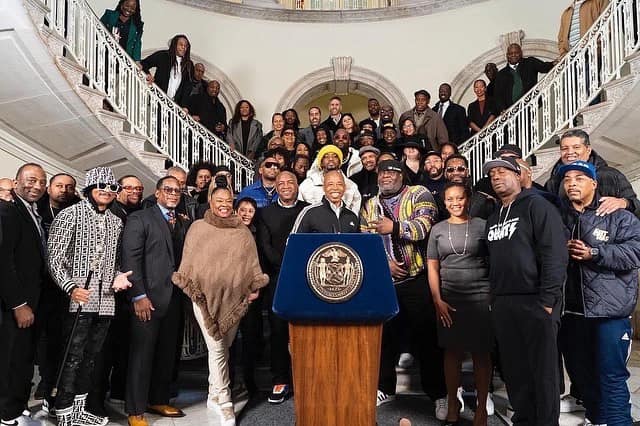
The photo above refers to the idea of Hip Hop turning 50 in the Bronx. A museum will be erected and celebrations across the city will be made.
well in my view, what people call hip hop is merely a continuation of the Black poetic culture in the 1950s and 1960s which spoke more to black empowerment/africa that itself was born from earlier decades like langston hughes which you see in harlem's last poets. Mixed with the experimentation that black disk jockey's had started significantly earlier. And even the global exposure is merely continuation. If you look at Gospel then the Blues, then Jazz and then the Motown Sound<itself a version of rhythm and blues> you can see how each became more and more profitable in foreign shores. Hip Hop merely continued the long tradition in the music industry of the USA of exporting a style of Black music. .... For me, one of the tragedies of musical history is how it is presented by those in power more segmented than it is. Again, Rock & Roll is merely a variation of Rhythm and Blues which itself is a variation of the Blues. In the same way that Baroque/Classical/Oriental music in European Music is merely just versions of European Orchestral music. What I find changes more than music is the culture of people. And that is where the Bronx comes in. All the parts of hip hop were in harlem in the 1960s, but Harlem has a long musical tradition whereas the bronx was mostly white. So when the Black people from the south combined with the black folk from the carribean , immigration act in the 1960s who also combined with the white/mulatto/negra latinos, you created a multiphenotypical while also multicultural group of people who represented the future of NYC and regions of the USA. A plurality majority culturally is what Hip Hop allowed the USA to present to the humanity outside and it stunned the humanity outside who was used to Black music, but it was never attached to a culturally fluid identity like the hip hopers. Country music, which is merely white versions of the Blues mixed with european peasant music. or JAzz music which is secular southern Black music with metal instruments , ala the new orleans connection, are both very popular outside the USA but are culturally more rigid. While the Hip hoppers have an everybody's welcome attitude for the most part, that connects to the USA's reality after the immigration act of the 1960s. When Jennifer Lopez a child of the Bronx in the era of hip hoppers wanted to headline a motown show. Black people booed her and the show . why? back to my point. The key to Hip Hopers isn't their music. Everything Hip Hopers did musically you can find in Black music or music by Black people in the USA before the 1970s. Phyllis Wheatley through the last poets is the poetry. The Ragtimers through to the experimental jazz is the extreme improvisation. The Blues or its derivatives: rhythm and blues and rock and roll make up the rest. But culturally, the Hip Hoppers at their core were welcoming to all. All they wanted in return was respect. Whereas the last poets were against inviting blancos <white latinos> or white asians or white jews the Hip Hoppers welcomed all. And even that ties to the History of those whose appearance is given the text label black. Frederick Douglass to MLK jr's philosophies is embedded in Hip Hoppers aracial view. If you give the hip hopper respect, they give it to you. Content of character not color of skin. And to that end, I wonder... but anyway, congratulations to the black folk involved.
-
Jacinda Townsend Wins 16th Annual Ernest Gaines Book Award for Mother Country
Read more details in the post immediately belowAlvin Bragg, now Manhattan District Attorney, speaks with supporters on election night, in New York, Nov. 2, 2021. (AP Photo/Craig Ruttle, File)
Bragg to toss 188 convictions due to NYPD misconduct
Dean Meminger reported
Manhattan District Attorney Alvin Bragg on Thursday said he will toss nearly 200 convictions that were secured by eight NYPD officers found guilty of work-related criminal conduct.Bragg on Thursday morning began the process of vacating 188 misdemeanor convictions stemming from arrests that took place between 2001 and 2016, his office said in a press release.
Eight officers tied to the 188 convictions were convicted themselves, of crimes ranging from bribe-receiving and official misconduct to falsifying business records and perjury, the release said. More than 94 of the convictions led to prison sentences or fines.
What You Need To Know
Manhattan District Attorney Alvin Bragg on Thursday said he will toss nearly 200 convictions that were secured by eight NYPD officers found guilty of work-related criminal conductBragg on Thursday morning began the process of vacating 188 misdemeanor convictions stemming from arrests that took place between 2001 and 2016
Eight officers tied to the 188 convictions were convicted themselves, of crimes ranging from bribe-receiving and official misconduct to falsifying business records and perjury
“While most law enforcement officials and police officers are dedicated public servants, these eight officers, who played a material role in hundreds of arrests, criminally abused their positions of power,” Bragg said in a statement.“These illegal actions irrevocably taint these convictions and represent a significant violation of due process rights — the foundational principle of our legal system,” he added.
In a statement NYPD Commissioner Keechant Sewell said there was "zero tolerance in the NYPD for corruption or criminal activity of any kind by any member of the service."
“Those who betray their sworn oath to serve and protect the public have no place in the NYPD — and it is important to note that the involved officers are no longer employed by New York City Police Department," Sewell said.
One of the eight former NYPD officers tied to the convictions, Jason Arbeeny, was found guilty of charges that included official misconduct for planting drugs on two people, the DA’s office said.
A second officer, William Eiseman, was convicted of first-degree perjury and official misconduct for carrying out illegal searches and falsely testifying, while a third officer, Michael Foder, was found guilty of lying under oath during a federal hearing, the release said.
A fourth officer, Richard Hall, received five years’ probation after he and another NYPD detective had sex with a woman they took into custody in exchange for her release, according to the DA’s office.
The four other officers were Michael Arenella, who was found guilty of petty larceny, official misconduct and falsifying business records; Michael Carsey, who was convicted of first-degree perjury and first-degree offering a false instrument for filing; Johnny Diaz, who was convicted on charges including second-degree bribe receiving; and Nicholas Mina, who was found guilty of charges including criminal sale of a controlled substance and criminal sale of a firearm.
In a statement, Elizabeth Felber, the director of the Wrongful Conviction Unit at The Legal Aid Society, praised Bragg’s push to vacate the convictions.
“While this moment delivers some justice and closure to these New Yorkers, they were forced to endure hardships that should have never been allowed to happen,” Felber said. “This includes incarceration, hefty legal fees, loss of employment, housing instability, severed access to critical benefits and other collateral consequences.”
“Going forward, we urge DA Bragg and all of the other New York City District Attorneys to conduct these reviews on an ongoing basis and with full transparency,” Felber said.
article
https://www.ny1.com/nyc/manhattan/news/2022/11/17/manhattan-da-bragg-to-toss-convictions?cid=app_share
referral
https://twitter.com/DeanMeminger/status/1593427403434594306MY POST THOUGHTS
Every single law enforcer in the history of the NEw York Police Department has committed the crime or aiding or abetting another NYPD member. This is a simple fact.
The reality is the quantity of NYPD members plus their saturation in every community in New YOrk City means many will put up a wall of denial to the stated fact for a relative or friend who is in the nypd ranks.
This combo image shows Democratic candidate for Colorado's 3rd Congressional District Adam Frisch, left, and U.S. Rep. Lauren Boebert, R-Colo., right. Associated Press, FileLauren Boebert's Democratic challenger conceded after she declared victory, even as the unexpectedly tight race has not been called and likely heads to an automatic recount
Story by hgetahun@insider.comDemocratic candidate Adam Frisch conceded to his opponent, GOP Rep. Lauren Boebert, in an extremely close race to represent Colorado's Third Congressional District.
Boebert was leading by about 554 votes with more than 99% of votes counted as of Friday evening, according to Insider's election partner Decision Desk HQ. No major media network has yet called the race, which was not expected to be competitive until the surprisingly close results began rolling in on election night.
Under Colorado state law, a recount will automatically ensue if a candidate wins by a margin that is 0.5% or less of their total vote count. Boebert's current lead of 554 out of her total 163,832 votes falls within that threshold, at about 0.34%.
Despite the results not being called yet, Frisch said on Facebook live Friday that he called Boebert to concede the race to her, adding that the chances of him winning were "very small."
"The likelihood of this recount changing more than a handful of votes is very small. Very, very small. It'd be disingenuous and unethical for us or any other group to continue to raise false hope and encourage fundraising for a recount," Frisch said during his concession speech. "Colorado elections are safe, accurate, and secure. Please save your money for your groceries, your rent, your children, and for other important causes and organizations."
Frisch did not immediately respond to Insider's request for comment.
Boebert also acknowledged the call in a Tweet on Friday, saying: "I look forward to getting past election season and focusing on conservative governance in the House majority."
—Lauren Boebert (@laurenboebert) November 18, 2022 [ https://twitter.com/mims/statuses/1593675506712338432 ]
The conservative firebrand had already declared victory in the race. On Thursday evening, Boebert announced on social media: "We won!"In the accompanying video, she said there were "less than 200 votes outstanding" and that she was "certain" that she would win the race, even with the recount. Insider could not confirm the amount of outstanding votes.
"Past recounts in Colorado have resulted in far fewer votes being adjusted than anything that could affect the current outcome we're seeing tonight in this race," she added.
Meanwhile, a Thursday FEC filing showed that Frisch had already submitted a statement of candidacy for 2024, potentially setting the stage for another Boebert-Frisch showdown.
MY THOUGHTS
I requote Frisch: The likelihood of this recount changing more than a handful of votes is very small. Very, very small. It'd be disingenuous and unethical for us or any other group to continue to raise false hope and encourage fundraising for a recount," Frisch said during his concession speech. "Colorado elections are safe, accurate, and secure. Please save your money for your groceries, your rent, your children, and for other important causes and organizations.

Italian Prime Minister Giorgia Meloni in Rome on Nov. 10. (Guglielmo Mangiapane/Reuters)
Rising tide of immigration to Europe pushing continent's politics to the right, experts say
Story by Melissa Rossi • Yesterday 7:44 PMAfter 16 days of the ship’s ignored distress calls to the Italian government asking to dock, France allowed the Ocean Viking safe harbor in Toulon on Nov. 11. According to the French interior minister, Gerald Darmanin, the vessel was Italy’s responsibility since it had been in Italian search and rescue waters, and ignoring the pleas “lacked humanity,” was “a nasty gesture” and was “incomprehensible.”
In a statement, Meloni’s interior minister, Matteo Piantedosi, fired back that “Italy has taken in 90,000 [migrants] just this year” and that it was the actions of France, which according to French broadcaster France 24 had never before received a migrant-filled rescue ship, that were “totally incomprehensible.” France, which in August took in 38 of the migrants that arrived in Italy this year, according to the European Commission, had pledged to accept 3,500 more later in 2022. But, said Darmanin, Italy’s behavior had forced France to retract that offer.
Such skirmishes between countries are becoming more common across Europe, where an increase in “irregular” migrants — as those who’ve entered illegally are called here — is pushing European politics in a rightward direction.
“There’s a relationship between the demographic change through immigration and the rise of the populist right in Western Europe,” Eric Kaufmann, author of “Whiteshift” and professor of politics at Birkbeck College, University of London, told Yahoo News. “The number of Europeans saying immigration is a top issue really rises along with rising migration numbers, and then the populist right rises along with that.”
Of late, the numbers of migrants, both legal and illegal, crossing into Europe are soaring.
This week Frontex, as the European border control and coast guard agency is called, released a new report showing that the number of illegal entries into Europe has risen by 77% since last year and is the highest since 2016.
Migrants have been illegally entering not only from across the Mediterranean but via land from non-EU Balkan countries, and tens of thousands have entered the United Kingdom by crossing the English Channel. And from Britain to Germany, Spain to Greece, countries are trying to figure out how to secure the continent, which has over 42,000 miles of coastline and 30 borders with non-EU countries, making external border security challenging.
According to Frontex, over 132,000 “detections” of entries to Mediterranean countries via sea were made from January to September of this year. However, an increasingly popular route for those trying to enter Europe illegally — whether to seek asylum or better economic opportunities — is to enter from non-EU countries such as Serbia and Albania, toward Hungary and from there to Austria and Germany. Over the past year, Frontex has made over 128,000 detections of illegal border entries of migrants, largely from Burundi, Afghanistan and Iraq, from that corner of southeastern Europe. According to the Associated Press, by September of this year state police had registered over 57,000 unauthorized entries into Germany, where the government in October met with EU officials to discuss how to seal borders, crack down on smuggling and speed up deportations.
“Annually, 2 to 3 million nationals from non-EU countries come to the EU legally, in contrast to 125,000 to 200,000 irregular arrivals,” EU Commission spokesperson for home affairs Anitta Hipper told Yahoo News. But, she added, “irregular migration is still a challenge.”
What’s more, the number of irregular migrants popping up in England is suddenly spiking even higher. This week the British department of defense announced that more than 40,000 people had crossed the English Channel from France and illegally entered England so far in 2022, while four years ago the number was a mere 299. On Wednesday the U.K. government also announced it is paying $75 million to France to bolster border security along the channel. Spain, meanwhile, is paying millions to Morocco to increase its security and prevent would-be migrants from crossing the Mediterranean to Spain. The EU has also spent billions on programs from economic development to job training to try to address the root causes behind illegal migration.
“There’s a concern that EU development funding is increasingly being used to finance projects aiming to curb migration towards Europe, rather than fulfilling their stated purpose, namely development in these countries — reducing poverty and inequality and improving livelihoods,” Stephanie Pope, EU migration policy adviser of human rights organization Oxfam International, told Yahoo News. “And we consider this to be a very dangerous development.”
To Rainer Münz, a senior research associate at the Martens Centre who specializes in migration, Europe’s media and policymakers are looking at the wrong issues — the recent attention given to the Ocean Viking saga being a case in point. “When 0.2% of migrants to Europe are dominating the headlines for weeks, it clearly shows that people are not looking at what’s going on.”
The biggest issue for him is that Europe’s population is declining, with the death rate exceeding the birth rate since 2015 — and the EU needs to bring in more skilled migrants “to stabilize the workforce.” But that’s not happening, he said. Legal immigrants “are not selected according to the talent and skills,” he said. “Politically, that’s not feasible, when 60 or 70% of your immigration is humanitarian, being either marriage or family reunion or asylum.”
And this year, with Europe taking in 5 million Ukrainians, who can legally live and work in the EU, the figure of humanitarian-motivated immigration in Europe is far higher, he added. “When 90% of your immigration is humanitarian, it’s not easy to convince the general public that we need to recruit another million people,” Münz said. “But if the aim is to bring more talented people here, you would have to reduce the inflow of people who do not fit European labor market needs. You would have to reduce the humanitarian flow in order to open up capacity for skilled worker admissions.”
Such talk is anathema to Pope. “Europe is a very, very wealthy region. If we look at it globally, and particularly the EU, by the end of 2021, for example, less than 10% of the world’s refugees were living in the EU. So if we look at it globally, [taking in more refugees] is very much something that the EU could manage effectively and humanely.”
However, Anna Knoll, head of migration and mobility at the European Centre for Development Policy Management, is concerned that humanitarian efforts are giving life to right-wing movements across the continent.
“You see countries like Sweden or Italy flipping more to the right side of the political spectrum,” Knoll told Yahoo News. “I think states are realizing they cannot afford having more refugees situated there or more irregular migrants coming in, because it does potentially push the voters more to the right. Obviously we try to balance this — we have principles, we have values and we are also a sanctuary for refugees. But we cannot allow everyone in.”
Knoll is especially worried about this winter, when more Ukrainian refugees are expected to come to Europe since Russia keeps attacking electrical and heating infrastructure. “If everything comes together — more migrants, super-high energy prices, inflation hitting the roof — at some point I wonder how much the system can take before people say, ‘No, we don’t want this.’”
In the meantime, France has already rejected the applications of 123 of the asylum seekers aboard the Ocean Viking, and on Friday, the Le Figaro newspaper reported that 26 of the minors on board had gone missing.
MY THOUGHTS
Most in humanity don't like strangers in their town. Maybe they are violent, maybe they are not, but few are happy. The newcomers want and the only way they get is if someone else doesn't have. The USA is a prime example.
People will say, Immigrants do jobs people in the usa don't want but that is untrue. the Native American, the Black DOS, the WASP <white anglo saxon protestants> are willing to do jobs with a better wage. The reality is, the fiscally wealthy in the usa setup the environment for immigration to get as near to slave labor as they could get and it worked. The price was laborers who already existed in the usa.
Europe doesn't want its workers to suffer the fate of workers in the usa, who between firms sending jobs overseas for lower wage or setting up domestic jobs under the salary standard, the immigrant or their kin overseas are the labor winners.
Europe enjoyed the USA being the haven but now upon being challenged to do it themselves, they are displaying the truth that they Europe, especially western Europe, chastized Russia/China or many other countries outside the USA or WEstern Europe for doing.
-
Any writers in here with zero or near zero drawing capability want a chance to have a complex logical process, commonly called, an Artificial Intelligence, compose a work of art for them?
I am considering making a group in deviantart for you writers. Writers who also draw, like me, your not welcome for now. For now, just the writers who can't draw
https://www.deviantart.com/hddeviant/art/Dreamupgif-937250338
-
Its funny, in the history of the usa, the midwestern or southern states at one time were the financial engines of the usa. The midwest + the southern states and to be blunt, the rural areas of the western or northeastern states all started on this trajectory in the 1900s. Rich white people in the USA needed two things, cheaper labor and a way to get the global populace to side with the usa. You achieve both by sending jobs from rural white usa to china/mexico/et cetera. The reality is, the USA bought the allegiance of countries with its actions. Remember, at the end of world war II, Europe or western asia were totally destroyed, physically. So, when the soviets said, screw capitalism, that was a compelling message. The USA couldn't philosophically better Russia , but it could financially do it. Remake European Industry, remake Japanese industry, make chinese industry, and all those countries will side with the usa more often than not. Get all the college graduate populace of the countries in africa/asia/south america/eastern europe to live in nyc or other big cities of the usa, and those countries will always be swayed or manipulated by the usa, cause most of their rich kids live at madison avenue. And they did, and russia lost the cold war. Russia was terrible at financial competition or racial 1 percenting. The USA realized the nigerian oil baron's son needs to have nice cushy job in a law firm. Soviet Russia didn't have the nuance for that. Soviet Russia taught non whites en masse before the usa, but they didn't offer them a job, the idea was they will go back to their countires. the USA realized these people don't want to go back, they want to eat a frankfurter on broadway. Now what does this have to do with the south + midwestern states. as I always say with fiscal capitalism, someone has to lose for another to win. the question is who losses or who wins. For Europa to be rebuilt + Asia be rebuilt + the one percent of all the countries of the world to have a cushy safe life away from their countries, the southern or midwestern states had to lose. All that money could had done to them, many of them still argue it should had went to them.
-
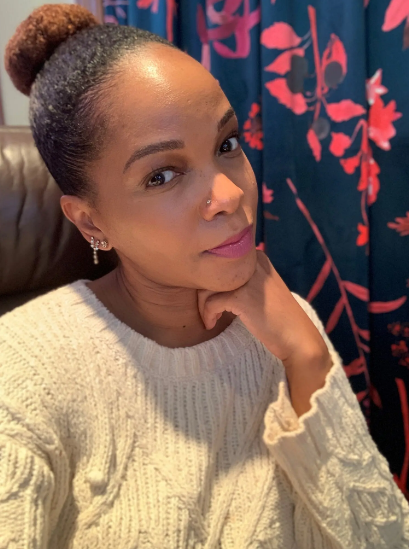
photo by imani perry
Searching for America, South of the Mason-Dixon
By Tayari Jones
Jan. 25, 2022Imani Perry has won the 2022 National Book Award for Nonfiction for "South To America: A Journey below the mason-dixon to understand the soul of a nation"
review of
SOUTH TO AMERICA
A Journey Below the Mason-Dixon to Understand the Soul of a Nation
By Imani PerryAt the start of “South to America,” Imani Perry implores the reader: “Please remember, while this book is not a history, it is a true story.” I tried to keep these instructions in mind — not always easy with a narrative so scrupulously researched and teeming with facts and citations — but ultimately, I discarded them. After all, Perry addresses everything from hip-hop to the United Fruit Company and her own grandmother. Any attempt to classify this ambitious work, which straddles genre, kicks down the fourth wall, dances with poetry, engages with literary criticism and flits from journalism to memoir to academic writing — well, that’s a fool’s errand and only undermines this insightful, ambitious and moving project.
This is no “both sides” affair: Perry is an unabashed “movement” baby, raised by intellectual freedom-fighter parents. The conviction of this book is that race and racism are fundamental values of the South, that “the creation of racial slavery in the colonies was a gateway to habits and dispositions that ultimately became the commonplace ways of doing things in this country.” In other words, the South is America, and its history and influence cannot be dismissed as an embarrassing relative at the nation’s holiday dinner table.
Inspired by Albert Murray’s 1971 memoir-cum-travelogue “South to a Very Old Place,” Perry travels to over a dozen Southern cities and towns, excavating both histories and modern realities. She begins at Harpers Ferry, W.Va. We meet Shields Green, a Black South Carolinian known as the “Emperor of New York” who was executed along with John Brown. His heroism has been nearly lost to history, and to compound the tragedy, after he was hanged his body was given to Winchester Medical College for dissection. In telling his story, Perry reveals the first of many patterns in the quilt stitched on these pages: At each stop, she recounts an atrocity, but also resistance. And she does not flinch when documenting the consequences.
From the three essays that examine Alabama it’s clear that despite a childhood in New England, Perry’s heart belongs to the idiosyncratic Yellowhammer State. Her tone grows tender as she recalls her dancing cousins or the foot-washing Baptists. Her portraits of her grandmother combine elegiac longing and the rigor of a historian setting the record straight. Equally moving are the dispatches from her mother’s native Louisiana.

The theme of unmarked graves and untold stories permeates this work. As remediation, Perry names scores of Southerners: some famous, some unknown. As Andre 3000 declared, “The South got something to say.” And it’s a breathtaking something — from fine arts to reality television, internationally traded corporations to roadside rib-shacks whose flavors inform the American palate.
Perry vowed to visit and contemplate as much of the South as possible for this project; this ambition is both gift and obstacle. The benefit of such a large canvas is that patterns are easily identified. Historical injustice such as the Wilmington Massacre cannot be dismissed as a one-off, nor can the contemporary violence of Dylann Roof, or the storied resistance of Rosa Parks. Perry finds that one “hidden virtue of an unsure genealogy is a vast archive of ways of being learned from birth.”
It is inevitable, though, that all sites will not receive equal care and attention — and clearly her loyalty is to Alabama. An acolyte of Toni Morrison, Perry nevertheless takes pointed issue with the Nobel laureate’s characterization of the women of Mobile. I understand her pain, for it is the same feeling conjured in me as I read the chapter on Atlanta, my hometown. While in some places, Perry has the benefit of a guide, here she doesn’t cite the personal conversations that led to her insights, and the resulting observations feel a bit chilly. Perry declares that “the major metropolis of the South doesn’t have a sufficient mass transit system or a polyglot culture....” but goes on to suggest that survivors of dirt roads take comfort, instead, in the shiny baubles hawked in Lenox Mall. Well, that hurt my feelings.
Wounded pride aside, it must be said that this work, though sometimes uneven, is an essential meditation on the South, its relationship to American culture — even Americanness itself. This is, as Perry puts it, “not a preservation. This is intervention.” For too long, the South has been scapegoated and reduced to a backward land on the other side of some translucent, but impenetrable, barrier.
Beyond the literal divide of the Mason-Dixon, Perry is fixated on the line that divides past and present. On her travels she encounters a Confederate re-enactor celebrating a birthday. Though he is nostalgia and revisionism made flesh, Perry finds him surprisingly pleasant. Assuming he’ll speak about “Northern aggression,” Perry chooses not to question him, and this, too, is the legacy of the intimacy of slavery — we have lived together so long that we believe we can read each other’s minds.
During her visit to Maryland, Perry sees people wearing muslin shirts and straw hats while laboring in a field. Her insides clench, fearing that she is witnessing some cruel antebellum cosplay. As she gets closer, Perry hears the men speaking Spanish. She was “sad, and also relieved. Workers, not re-enactors.” But of course, this underscores the refrain of this immersion in Southern (American) life and history — to what extent are we all re-enactors of the nation’s brutal history? This work — and I use the term for both Perry’s labor and its fruit — is determined to provoke a return to the other legacy of the South, the ever-urgent struggle toward freedom.
Tayari Jones is the Charles Howard Candler professor of English at Emory University.
SOUTH TO AMERICA
A Journey Below the Mason-Dixon to Understand the Soul of a Nation
By Imani Perry
433 pp. Ecco. $28.99.ARTICLE
https://www.nytimes.com/2022/01/25/books/review/south-to-america-imani-perry.html

Harlem debuts African Jazz Art Society & Studio (AJASS) documentary
by CINQUE BRATTEE
May 12, 2022African Jazz Art Society & Studio Credit: Kwame Brath photo
It’s taken several decades, but it’s finally happening: a documentary about the African Jazz Art Society & Studio (AJASS), who have the earliest documented contributions as an organization to what people now recognize as the Black Arts Movement. The artist collective formed in 1956 on Kelly Street in the South Bronx, with the agenda of preserving jazz music as an African art form, at a time that many saw it being wrestled away by white interlopers.Filmmaker Louise Dente, of Cultural Caravan, will debut her documentary on AJASS at the Dwyer Cultural Center on Sunday, May 15. It is very appropriate timing since May 15 has been declared AJASS Day by New York State Sen. Cordell Cleare. She will provide proclamations recognizing members of the historical organization at the intermission of the film.
It’s the first, but surely not the last, film to focus on AJASS. There are other documentaries that have mentioned significant contributions by AJASS, with the most notable being the EPIX four-part series that was successful enough to garner the NAACP Image award for its director, Keith McQuirter in 2021. McQuirter included some significant highlights about AJASS in his four-part docuseries entitled “By Whatever Means Necessary: The Times of Godfather of Harlem.”
The documentary focused on the music and cultural activism during the life and times of Bumpy Johnson, the Godfather of Harlem. Filmmaker Louise Dente’s documentary will look at the birth of the Black is Beautiful Movement and celebrate 66 years, from AJASS’s 1956 founding date to the present day.Last year, Community Board 2 in the South Bronx voted to recognize and honor the historical organization with a street co-naming recognizing its Kelly Street birth and contributions to the cultural development of the Bronx. Unfortunately, this honor has been delayed as City Councilman Rafael Salamanca’s office was slowed by COVID restrictions and delays, so paperwork was delayed. Now the honor should happen this year. New Yorkers will continue to hear more about the AJASS organization and its terrific members as an exhibit by the New York Historical Society hits town on Aug. 23. The exhibit focusing on the photography of AJASS co-founder Kwame Brathwaite is entitled “Kwame Brathwaite: Black is Beautiful.” The exhibit will run for six months down the museum mile on 5th Avenue, and New Yorkers will get a chance to see and learn about AJASS global contributions through the photographic lens of one of its founders.
VIP ticket buyers will begin festivities at 2 p.m. on Sunday, May 15, and general ticket holders will commence at 3:50 p.m. for this highly anticipated film documenting an important history that some are just beginning to understand the impact of. For tickets go to Eventbrite and type in AJASS.
Black Is Beautiful: The Photography of Kwame Brathwaite
August 19, 2022 - January 15, 2023
One of the minds behind the "Black Is Beautiful" movement, Kwame Brathwaite has long deployed his photography as an agent of social change. This exploration of his work features 40 stunning studio portraits and behind-the-scenes images of Harlem's artistic community.
LOCATION
2nd floor, Luman Reed GalleriesKnown as the “keeper of the images,” Kwame Brathwaite deployed his photography from the late 1950s and throughout the 1960s as an agent of social change. Born in Brooklyn to a Caribbean American family and raised in the Bronx, Brathwaite traces his artistic and political sensibilities to his youth. After seeing the horrific images of Emmett Till published in Jet magazine in 1955, Brathwaite and his brother Elombe Brath turned to art and political activism, absorbing the ideas of the Jamaican-born activist Marcus Garvey, who promoted a Pan-Africanist vision for Black economic liberation and freedom. Kwame and Elombe founded the African Jazz-Art Society & Studios (AJASS), a collective of artists and creatives that organized jazz concerts in clubs around Harlem and the Bronx. The group also advanced a message of economic empowerment and political consciousness in the Harlem community, with “Think Black, Buy Black” emphasizing the power of self-presentation and style. In the 1960s, Brathwaite and his collective also sought to address how white conceptions of beauty and body image affected Black women. To do so, they popularized the transformative idea “Black Is Beautiful” and founded the Grandassa Models, a modeling troupe of locally cast women who appeared in annual fashion shows at Harlem’s Apollo Theater.
Organized by Aperture, New York and Kwame S. Brathwaite, the exhibition features 40 stunning studio portraits and behind-the-scenes images of Harlem’s artistic community, including Max Roach and Abbey Lincoln, as well as dresses worn by the Grandassa Models, offering a long-overdue exploration of Brathwaite’s life and work. The exhibition is coordinated at New-York Historical by Marilyn Satin Kushner, curator of prints, photographs, and architectural collections.
Audio Tour
The accompanying audio tour for Black Is Beautiful—available on our Bloomberg Connects digital guide—explores some of the exhibition's key themes and stories. From the origins of the Black Is Beautiful movement to the birth of AJASS to the rise of Black activism in the 1960s to a reflection on natural beauty, you'll hear about photography as an agent of social change. This illustrated tour, narrated by Kwame S. Brathwaite, Sikolo Brathwaite, photography historian Deborah Willis, and curator Marilyn Satin Kushner, reflects on the photographs and fashions in the exhibition.
Download the Bloomberg Connects app now > [ https://www.bloombergconnects.org/?_branch_match_id=1062812982689049197&utm_medium=marketing&_branch_referrer=H4sIAAAAAAAAA8soKSkottLXTywo0EvKyc%2FPTUotSk%2FOz8tLTS4p1ssvStc3d%2FfPzXLLC%2FfNSgIAOxlOuC0AAAA%3D ]
Spotify PlaylistMusic plays a vital and central role in this exhibition. Enjoy a curated playlist selected by the photographer Kwame Brathwaite and his son, Kwame S. Brathwaite, director of the Kwame Brathwaite Archive.
Listen on Spotify now > [ https://open.spotify.com/playlist/6SnR3uHeBF7pXSR3vVxGuY?si=cSyCxAsRQcGim-yXX2mK9A&nd=1 ]Major support for Black Is Beautiful: The Photography of Kwame Brathwaite at New-York Historical is provided by Bank of America and Agnes Gund. The exhibition and the accompanying Aperture publication are made possible, in part, with generous support from the National Endowment for the Arts and the Photographic Arts Council Los Angeles.
Article
https://www.nyhistory.org/exhibitions/black-is-beautiful-the-photography-of-kwame-brathwaiteNew-York Historical Society Showcases Black Is Beautiful: The Photography of Kwame Brathwaite
On View August 19, 2022 – January 15, 2023, the Acclaimed Traveling Exhibition Comes to New York City Featuring the Life and Work of a Key Figure in the Black Arts Movement
NEW YORK, NY (July 12, 2022) – Beginning August 19, 2022, the New-York Historical Society is the exclusive New York City venue for the traveling exhibition Black Is Beautiful: The Photography of Kwame Brathwaite, the first major show dedicated to this pivotal figure who helped launch and popularize the “Black Is Beautiful” movement of the 1960s. On view through January 15, 2023, the exhibition features 40 large-scale color and black-and-white photographs that document how Brathwaite helped change America’s political and cultural landscape during the so-called Second Harlem Renaissance, using his art to affirm Black physical beauty, celebrate African American community and identity, and reflect the vibrancy of Harlem’s jazz scene, local businesses, and events.
“We are thrilled to bring this exhibition to New York City, Kwame Brathwaite’s hometown and the location of many of his most powerful images,” said Dr. Louise Mirrer, president and CEO of New-York Historical. “His work is a testament to the power of a visual medium to impact the movement towards racial equity. We hope Kwame Brathwaite’s photographs inspire a deeper understanding of the Black empowerment movement and how its legacy resonates today.”
“This stop on the touring exhibition is especially meaningful because this is a New York story,” said Kwame S. Brathwaite. “My father was born in Brooklyn, raised in the Bronx and resides in Manhattan. These images introduce us to the origin of the Black is Beautiful movement that started in Harlem and show us how art, politics, music, and fashion combined to inspire, empower and change the status quo.”
Exhibition Highlights
The exhibition chronicles Brathwaite’s evolution as an activist and artist. Born in Brooklyn in 1938, and raised in the Bronx, Brathwaite was still a teenager when he saw the horrific photographs of Emmett Till in his open casket published in Jet magazine in 1955. For Brathwaite, as for so many people, the impact of those photographs was decisive. As the son of a Caribbean American family, Brathwaite was also greatly influenced by the ongoing Pan-Africanist legacy of the Jamaican-born activist Marcus Garvey.With his brother Elombe, Brathwaite founded the African Jazz-Art Society & Studios (AJASS) and organized concerts featuring jazz luminaries such as Miles Davis, Abbey Lincoln, and Max Roach. In addition to promoting musical events, the group advanced a message of economic empowerment and political consciousness in the Harlem community, emphasizing the power of self-presentation and style. “Think Black, Buy Black” became a rallying cry.
In the 1960s, Brathwaite and his collective also sought to address how white conceptions of beauty and body image affected Black women and culture. To do so they popularized the transformative idea “Black Is Beautiful” and founded Grandassa Models, a group of Black women of varying backgrounds from the community who embraced natural hairstyles and their African ancestry. The modeling troupe sought to counter both the slight, androgynous figure made famous by 1960s British supermodels Jean Shrimpton and Twiggy and the ubiquity of lighter-complexioned, straight-haired Black models in Black-owned publications such as Ebony. Alongside striking photographs of Grandassa models, the exhibition features several dresses and pieces of jewelry worn by the women.
Special to New-York Historical’s display of the exhibition is a new audio guide available on the Bloomberg Connects app. The audio provides context about the “Black Is Beautiful” movement, the African Jazz-Art Society & Studios, and the Grandassa Models. The audio guide also explores other topics explored in the exhibition including jazz, Black activism, natural beauty, fashion, and Harlem during the time period depicted in Brathwaite’s photographs.
Organized by Aperture in partnership with Kwame S. Brathwaite, Brathwaite’s son and director of the Kwame Brathwaite Archive, the photographs—mostly shot in Harlem and the Bronx—tell a story of a movement and a time. Following its presentation at New-York Historical, the exhibition travels to the University of Alabama at Birmingham for the Abroms‐Engel Institute for the Visual Arts in February 2023.
The exhibition is accompanied by the first monograph dedicated to Kwame Brathwaite. Featuring essays by Tanisha C. Ford and Deborah Willis and more than 80 images, Kwame Brathwaite: Black Is Beautiful (Aperture, 2019) offers a long-overdue exploration of Brathwaite’s life and work and is available from the NYHistory Store.
About Kwame Brathwaite
Kwame Brathwaite (b. Brooklyn, New York, 1938) lives and works in New York. His photographs have been included in solo and group exhibitions at Philip Martin Gallery, Los Angeles; David Nolan Gallery, New York; and the Museum of the City of New York; and published in Aperture, the New Yorker, New York Times, and New York magazine. Brathwaite’s photography is held in public and private collections, including those of the Block Museum of Art, Northwestern University, Evanston, Illinois; Frances Young Tang Teaching Museum and Art Gallery at Skidmore College, Saratoga Springs, New York; MIT List Visual Arts Center, Cambridge, Massachusetts; Museum of the City of New York; Museum of Modern Art, New York; Santa Barbara Museum of Art, California; and Whitney Museum of American Art, New York. Organized by Aperture, Black Is Beautiful: The Photography of Kwame Brathwaite was first presented at the Skirball Cultural Center, Los Angeles, in 2019.Programming
On Wednesday, October 19, photographer Kwame Brathwaite Jr. and historian Tanisha Ford with moderator Khalil Gibran Muhammad discuss the exhibition and legacy of the photographs on view. Special family programs related to the exhibition will take place during Martin Luther King Jr. weekend. Private group tours can also be arranged throughout the exhibition’s run.Support
Major support for Black is Beautiful: The Photography of Kwame Brathwaite at New-York Historical is provided by Bank of America and Agnes Gund. The exhibition and the accompanying Aperture publication are made possible, in part, with generous support from the National Endowment for the Arts and the Photographic Arts Council Los Angeles. Exhibitions at New-York Historical are made possible by Dr. Agnes Hsu-Tang and Oscar Tang, the Saunders Trust for American History, the Evelyn & Seymour Neuman Fund, the New York City Department of Cultural Affairs in partnership with the City Council, and the New York State Council on the Arts with the support of the Office of the Governor and the New York State Legislature. WNET is the media sponsor.About the New-York Historical Society
Experience 400 years of history through groundbreaking exhibitions, immersive films, and thought-provoking conversations among renowned historians and public figures at the New-York Historical Society, New York’s first museum. A great destination for history since 1804, the Museum and the Patricia D. Klingenstein Library convey the stories of the city and nation’s diverse populations, expanding our understanding of who we are as Americans and how we came to be. Ever-rising to the challenge of bringing little or unknown histories to light, New-York Historical will soon inaugurate a new annex housing its Academy for American Democracy as well as the American LGBTQ+ Museum. These latest efforts to help forge the future by documenting the past join New-York Historical’s DiMenna Children’s History Museum and Center for Women’s History. Digital exhibitions, apps, and our For the Ages podcast make it possible for visitors everywhere to dive more deeply into history. Connect with us at nyhistory.org or at @nyhistory on Facebook, Twitter, Instagram, YouTube, and Tumblr.Press Contacts
Marybeth Ihle
New-York Historical Society | 212-873-3400 ext. 326 | marybeth.ihle@nyhistory.orgJulia Esposito
Polskin Arts & Communications Counselors | 212-715-1643 | Julia.Esposito@finnpartners.comArticle
https://www.nyhistory.org/press/new-york-historical-showcases-photography-of-kwame-brathwaiteKwame Braithwaite short gallery





